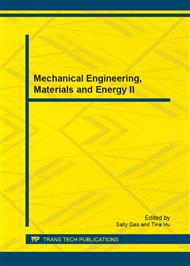p.51
p.55
p.59
p.65
p.71
p.75
p.80
p.86
p.90
Application of the Dither Technology in a Fault Detection System
Abstract:
In a fault detection system A/D conversion is a necessary step, in which quantization issues are unavoidable. Problems about quantization effects can be solved properly by using the dither technique. Firstly quantization problems of A/D conversion in a fault diagnosis system are discussed. Then the principle of dithering technique is introduced from the view of probability statistics. In further more, it is tested that fault signals whose amplitude is less than the quantization interval can be extracted, and that coherent harmonic interference in quantizing process can also be eliminated. Finally the result shows that by using dither technique the system can gain an enhanced level of fault detection with a faint signal-to-noise ratio loss, which has a direct guidance on engineering design in sensor-signal-sampling system.
Info:
Periodical:
Pages:
71-74
Citation:
Online since:
January 2013
Authors:
Keywords:
Price:
Сopyright:
© 2013 Trans Tech Publications Ltd. All Rights Reserved
Share:
Citation:


